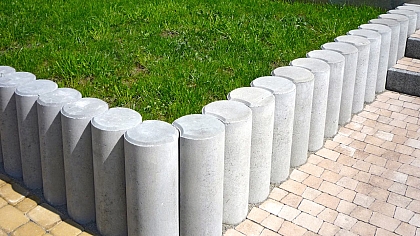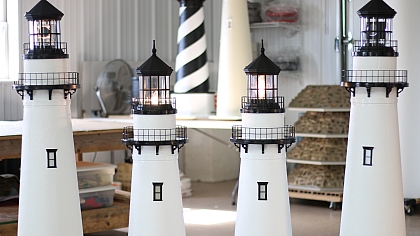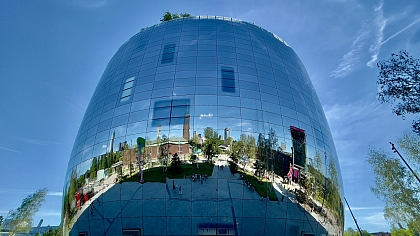
Tips for Maintaining & Cleaning Your Livestock Metal Barn
A livestock metal barn does a big job. It houses all your animals, protects them from heat and cold, and offers them space to feed comfortably. A steel livestock barn does many other things so that you can nurture animals effectively. But what do you do to maintain the barn in better condition?
The structure also needs regular care and maintenance. But merely cleaning the space is not the care. It can only clean the surface; what about the things that can deteriorate the structure from within? Longer exposure to rain can lead to water accumulation, which can be the reason for moisture building and invite many diseases in animals.
Cleaning and maintenance are not only effective for keeping the barn in better condition but are also crucial for the animals' health and for your business operations to run smoothly. We researched and found some crucial ways you can use to keep your steel building in good condition for several years.
Smart Ways to Clean and Care for Your Metal Barn
Livestock barns can easily get messy. Cow dung, horse hair, mud, and spilt feed build up fast if not cleaned regularly. It creates bad smells and sick animals, and even damages your metal barn slowly. Generally, livestock barn buildings made of steel can serve 50 years, but that is with proper care. Maintenance is crucial so that the structure keeps serving your animals for a longer time. A little effort goes a long way. Follow the ways mentioned below and put your best foot forward towards achieving a clean steel barn.
1. Create a Plan for Maintenance:
Start everything with a plan. Think of your requirements and the condition of the barn. If you do not have time to clean the barn daily, hire someone who can do it. Because barns where livestock live get dirty every day. Although metal barns are easy to clean, when livestock are living there, they become so dirty and messy that they not only need to be cleaned daily but also with proper tools.
A daily cleaning routine ensures:
- Healthier animals
- No pest build-up
- Lower risk of rust from waste acids
Quick Tasks to Do Daily:
- Scoop out waste from stalls
- Sweep out leftover feed
- Check and clean water troughs
- Remove wet bedding or hay

A Plan for Cleaning:
Morning Tasks
- Remove manure and soiled bedding from all stalls.
- Sweep the barn floor to remove dust and hay.
- Refill fresh water in troughs and clean feed buckets.
- Open windows or vents for ventilation.
- Do a quick health check on animals.
Noon Check-in
- Spot-clean any new waste or mess.
- Check for slippery spots and clean them immediately.
- Make sure fans and vents are running properly.
- Ensure feed and water areas remain clean.
Evening Wrap-Up
- Remove evening waste buildup.
- Replace damp bedding with dry materials.
- Close windows or secure openings.
- Do a final check of tools, locks, and equipment.
- Ensure animals are comfortable for the night.
2. Power Wash the Barn:
Accumulated and dried dirt, grime, and manure can’t be removed with simple cleaning. Over time, these substances on the walls lead to unpleasant odours and unhealthy environments for animals and workers inside the barn. Power washing is an important process for removing stubborn dirt. It reduces bacteria, mould, and fungi to save your animals by offering them a healthier environment. Cleaning walls and surfaces without power washing can consume most of your time and exhaust you. But be careful about the speed of the water, as it can remove paint. So, maintain a moderate or appropriate level of water speed.
How to do it:
- Choose a high-pressure washer to blast away stubborn dirt. But maintain the right pressure.
- Use mild detergents or special barn cleaners, as harsh cleansers can damage the metal or affect animals.
- Power wash during dry weather to ensure everything dries properly.
3. Ensure Good Insulation and Ventilation:
Ensuring good insulation and ventilation in steel livestock barns is an important part of maintenance. It creates a comfortable and safe environment for your livestock the entire year, regardless of weather. You can choose Woven R-17, Single Bubble, and Double Bubble insulation based on your needs. Insulation will maintain a consistent temperature, and ventilation will ensure the barn doesn't trap moisture
It is also important to maintain air quality because harmful gases like ammonia and carbon dioxide can often affect animal health. Proper airflow prevents this problem by stopping mould and mildew.
How to do it:
- Contact a metal building dealer who provides customisation options like insulation and ventilation services.
- Share your requirements with the dealer and discuss the prices and budget.
- Ensure that vents are adjustable so you can control airflow depending on the season.
4. Fix the Structure Proactively:
You have to take some proactive steps to keep the barn in a better condition for decades. The first and most important one is buying metal structures made of high-quality components. It makes the structure less likely to be damaged by elements easily. Apart from that, take care of small structural issues before they become major problems. This way, you can escape from costly repairs. Ensure that everything is in good working order by fixing minor issues early.
It increases the lifespan of the structure by proactively addressing minor cracks, leaks, and weak points promptly. Check for any loose screws, nails, or bolts; if you notice problems in them, fix these joints. Do not forget to check the roof for leaks and cracks. Install a vertical roof for easy water, snow, and debris to slide off.

5. Disinfect Smartly:
Disinfectants keep the barn's environment livable, but overuse of these chemicals is also not good for the health of animals and people who work inside. Disinfectants remove harmful pathogens, bacteria, and viruses that could make your cattle, chickens, sheep, horses, and other animals you have housed in the barn sick. Microorganisms do not go away just by cleaning the surface with water. A sanitised barn reduces your livestock's risk of infections and respiratory issues.
Some points to consider for a safe process:
- Use animal-safe disinfectants to ensure they are non-toxic to your animals.
- Use them in high-contact areas like feed containers, water troughs, and stalls.
- Do not forget to follow the manufacturer's instructions on disinfectant usage.
- Always clean the floor thoroughly before using disinfectant.
6. Call for Help When Needed:
Don’t be shy or afraid to call for help whenever needed. Some tasks can be completed better together than alone. Sometimes, maintaining a barn can be overwhelming when you are dealing with large and heavy structural repairs. You must figure out during the maintenance which tasks can be done better with the help of a professional.
When and why is specialised help needed?
- Professionals can handle complex tasks because they have knowledge and have studied the same problems for many years.
- Often, you end up spending an entire day fixing one problem in a barn that could be done in an hour with the help of an expert.
- So, getting help from experts ensures tasks are completed correctly and on time with no mistakes and are less likely to cause further damage.
- Moreover, dealing with electrical systems can be dangerous. It's better for someone with experience to deal with such a problem.
Some maintenance tasks are easy, some need advanced technology, and some need experts. You need to follow the tips mentioned above; they are simple and easy to follow. If something can’t be handled on your own, then call an expert. But do not forget to be proactive by choosing the best quality steel livestock barns. This is the first and most important step towards the maintenance of the space.
Check your barn daily or at least once every three days, hire someone to clean it daily, and provide them with smart cleaning methods like power washing. Don't wait for problems to grow; fix issues early, plan your cleaning routine, and get expert help when needed.










